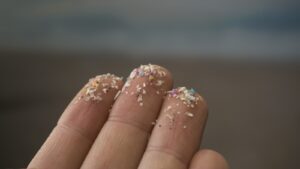Wwhen my husband brought me a cup of tea in bed this morning, I could barely muster a “thank you”. I was furious that he had blatantly spent the night with another woman (a friend of ours).
Never mind that it only happened in a dream. The emotions – betrayal, outrage, rejection – felt real. My next words – “I had a dream last night” – echo what Oscar Wilde is said to have considered the most terrifying sentence in the English language.
My husband would probably agree. He rolled his eyes when I told him what he was doing. This is not my mind’s first rendering of this particular dream, although the exact cast and plot vary.
Do such dreams reveal anything? A general anxiety? A deep-seated mistrust? A premonition? Or, as some researchers have claimed, is dreaming meaningless “noise”—a byproduct of the frantic neuronal activity that occurs during the phase of sleep known as “rapid eye movement” or REM sleep?
Jane Haynes is a London-based psychotherapist. She originally trained as a Jungian psychoanalyst and still believes there is great value in working with dreams and the unconscious. “Dreams carry a message of some kind,” says Haynes. “They communicate in a nocturnal language.”
However, it is not a language that lends itself to universal translation. Despite pop psychology claims to the contrary, dreams about teeth, or flying, or being naked in public do not each have their own one-size-fits-all meaning that can be simply decoded.
“As a psychotherapist, I guide, not decode,” says Haynes. “It is always the context that is important when trying to make sense of a dream. Someone telling you what your dream means takes away your agency.”
Haynes, together with the neurologist and sleep doctor Dr. Oliver Bernath, curates a Dream Symposium at the Royal Institution in London on 21 June. One of her motivations is to encourage people to take dreams more seriously. “They are an incredibly important part of our lives,” she says. Consider that we spend about one-third of our lives sleeping – and about 20% of the time we sleep dreaming – and it’s hard to argue.
Before we delve into the question of why exactly it is that we spend so much time in what is essentially a hallucinatory, delusional representation, a word to those of you who claim not to dream at all. Sorry: you are wrong.
Sleep lab research has shown that when people who say they don’t dream are monitored and woke up periodically during the night, they has dreamed They just don’t remember it in the morning.
The study of dreams – called oneirology – has a long history. In traditional Chinese culture, dreams were a gateway to the future; in ancient greece it was believed that dreams were messages from the gods. “Dormitories were held in the great arenas, where citizens could brood their dreams, with ‘dream guides’ on hand to interpret them,” says Haynes.
Although we now know that dreams come from within, it is still not entirely clear what purpose they serve.
This is a question that Prof Mark Solms, a neuroscientist at the University of Cape Town and the keynote speaker at the Royal Institution’s symposium, has been investigating for more than three decades. His research shed light on an intriguing, and seemingly contradictory, function of dreaming.
It is natural to assume that the brain is in a resting state during sleep. Far from it. “Brain imaging studies show that neuronal activity during REM sleep increases in many regions,” says Solms. These include the visuospatial lobe and motor cortex, which control movement and perception; the amygdala and cingulate cortex, which are the emotion processing centers; and the hippocampus, which deals with autobiographical memory.
The other sleep phases characterized by greater brain activity are shortly after we fall asleep (in what is known as the “sleep onset phase”), and when we move to wake up (the “late morning effect”). “All three of these phases are associated with dreaming,” says Solms.
You’d think one would get a better night’s rest without fleeing marauding zombies or playing a piano concert naked at the Royal Albert Hall – but Solms’ hunch was that dreaming is actually protected sleep. To test his theory, he studied a group of people with damage to a specific part of the brain called the parieto-occipital cortex, which means they don’t – could not – dream “They woke up repeatedly, especially right after entering each stage of REM sleep,” he says. “I have rarely seen such poor sleep.”
In simple terms, this suggests that one of the functions of dreaming is to harness all the brain activity that occurs during REM sleep, rather than allowing it to wake you up.
One region of the brain is less active during REM sleep: the prefrontal cortex. It is the rational decision-making center of the brain; Solms calls it the “head office”. It’s as if when this rational part of the brain is off duty, other parts can riot.
For Sigmund Freud, the father of psychoanalysis, dreams represented our repressed (and usually sexual) desires. But it was largely dismissed. As Solms points out, “many of our dreams are anything but wishful thinking”.
Indeed, research spanning 40 years and looking at more than 50,000 dream reports, shows that negative emotions are more commonly experienced than positive ones during dream states. The most commonly reported emotion is anxiety; more than 80% of people have dreamed of being chased. Haynes says this bent toward the dark side is reflected in the dreams that symposium attendees uploaded to the event’s website. “I don’t know why so few joyful dreams have been reported. We shouldn’t just focus on dreams as unpleasant states of mind.”
But there may be a method to the brain’s madness. In a series of fascinating studies, beginning in the 1960s, the late Dr. Rosalind Cartwright (also known as the “Queen of Dreams”) monitored the sleep and dreams of people going through divorces. She woke them up during each phase of REM sleep to find out what they dreamed about and discovered that those who dreamed about their situation were better able to cope with their actual stress than those who did not. She also found that the “emotional tone” (the term used to describe feelings associated with dream “action” – anxiety, confusion or shame, for example) of these dreams decreases with each stage of REM sleep. what a more neutral emotional response.
When Cartwright revisited her subjects a few months later, those who had not experienced dreams about their spouse/marital breakup were more likely to become depressive, leading her to describe dreaming as “an in-house psychotherapist.”
When I tell Haynes about my recent dream, and how I couldn’t help feeling irritated with my husband in the morning, she tells me that it’s common for the waking mind to be affected by dreams—remarkably, even when we don’t remember. they. “Attributing your mood to a dream experience is actually very valuable because it gives you the power to defuse it,” she says.
The idea that dreaming can help us work through unpleasant thoughts and events – the “emotional regulation” hypothesis – is now widely accepted and backed up by further research. In one study, subjects were exposed to a set of emotionally powerful images while their brain activity is measured in a functional MRI scanner. One half of the subjects saw the images in the morning and again, 12 hours later, in the evening. The other half saw them in the evening and for the second time the next morning, after a night’s sleep. Those who “slept on it” reported a less emotional response to the images the second time than those who didn’t, and their MRI scans showed less activity in the emotional processing center of the brain, suggesting that sleep – specifically REM sleep – warded off the distress associated with the experience.
However, there are other theories about the function of dreams.
Simulation theory – rooted in evolutionary biology – suggests that dreams are a rehearsal for threats and negative situations, providing us with “experience” to draw upon should we encounter such situations in real life. (I will be well exercised if my husband ever runs off with someone else.)
Rehashing, rather than repetition, is the basis for the continuity hypothesis, which frames dreams as a reflection of recent waking life concerns, thoughts, and experiences (something Freud called “day residue”). For example, animal rights activists dream more about animals than the average person. And dog owners who sleep in close proximity to their dogs dream more about dogs than those whose canine companions sleep in another part of the house.
If this all sounds a bit literal, it’s worth noting that research by Dr. Robert Stickgold, professor of psychiatry at Harvard Medical School, suggests that continuity is less about events than about the accompanying emotional tone. He found that dreamers themselves could recognize the emergence of daytime emotions, experiences or concerns in their dreams.
Stickgold further looked at the effect of dreams on memory consolidation, using a virtual maze study. First, subjects had to find their way out of the maze from different random locations, passing memorable landmarks along the way. Over the next five hours, half the group took a 90-minute nap while the other stayed awake. When they were tested again in the maze, sleep had a positive effect on memory, but people who specifically dreamed about the maze, or clearly related themes, improved their performance 10 times more than those who did not. Sleep was important, but it was dreams that served as a problem-solving activity.
The 19th century Russian scientist Dmitri Mendeleev is said to have imagined the periodic table in a dream. Samuel Taylor Coleridge’s poem Kubla Khan: or A Vision in a Dream is said to have come to him in a dream (and remained unfinished because he was distracted trying to write it down when he woke up). While the evidence that dreaming (as opposed to sleep, per se) can promote creativity is largely anecdotal, Haynes says that our dreams are a unique resource through which we can access our creativity. “And they’re free,” she adds.
I’m still not sure what to make of my infidelity dream – let alone the one where I killed someone and hid the body, only for it to be discovered decades later. But I’m convinced there’s more to it than random electrical activity.
“I have no problem with the idea that dreams reveal something,” says Solms. “What is surprising is that after 120 years of dream research – and all the technology at our fingertips – we still know so little.”





